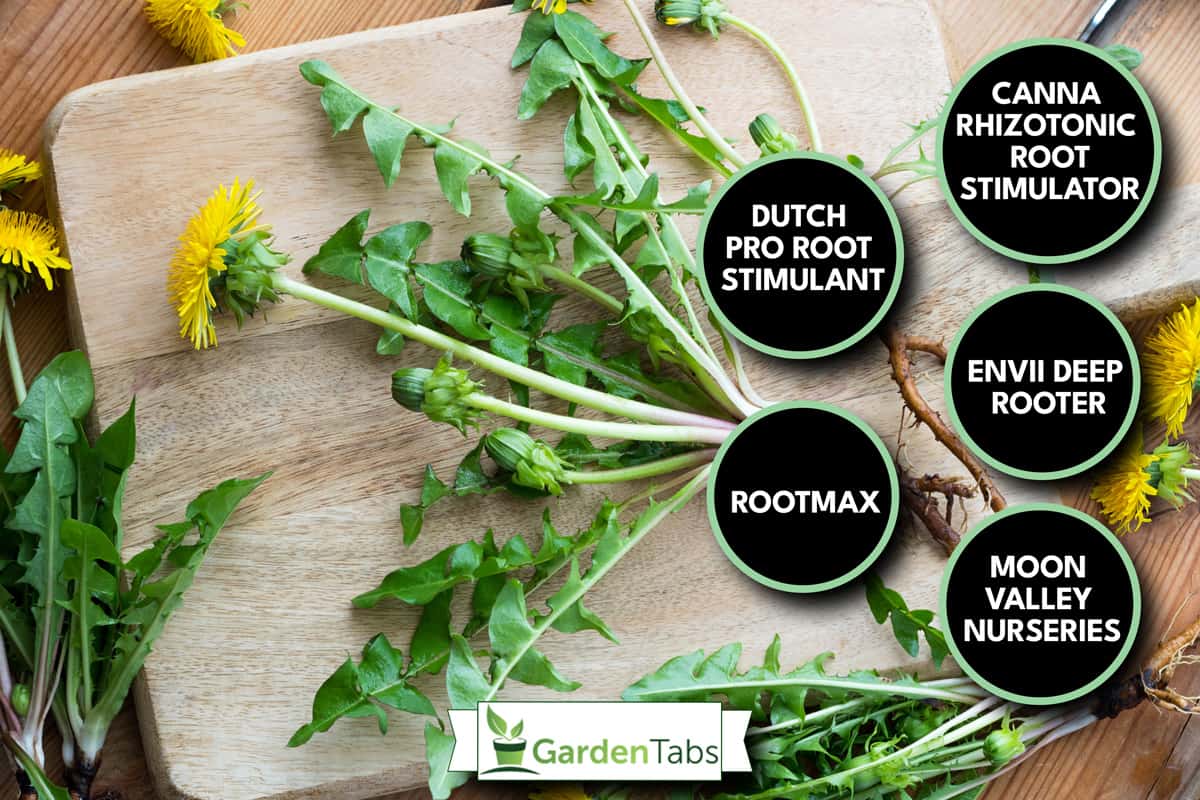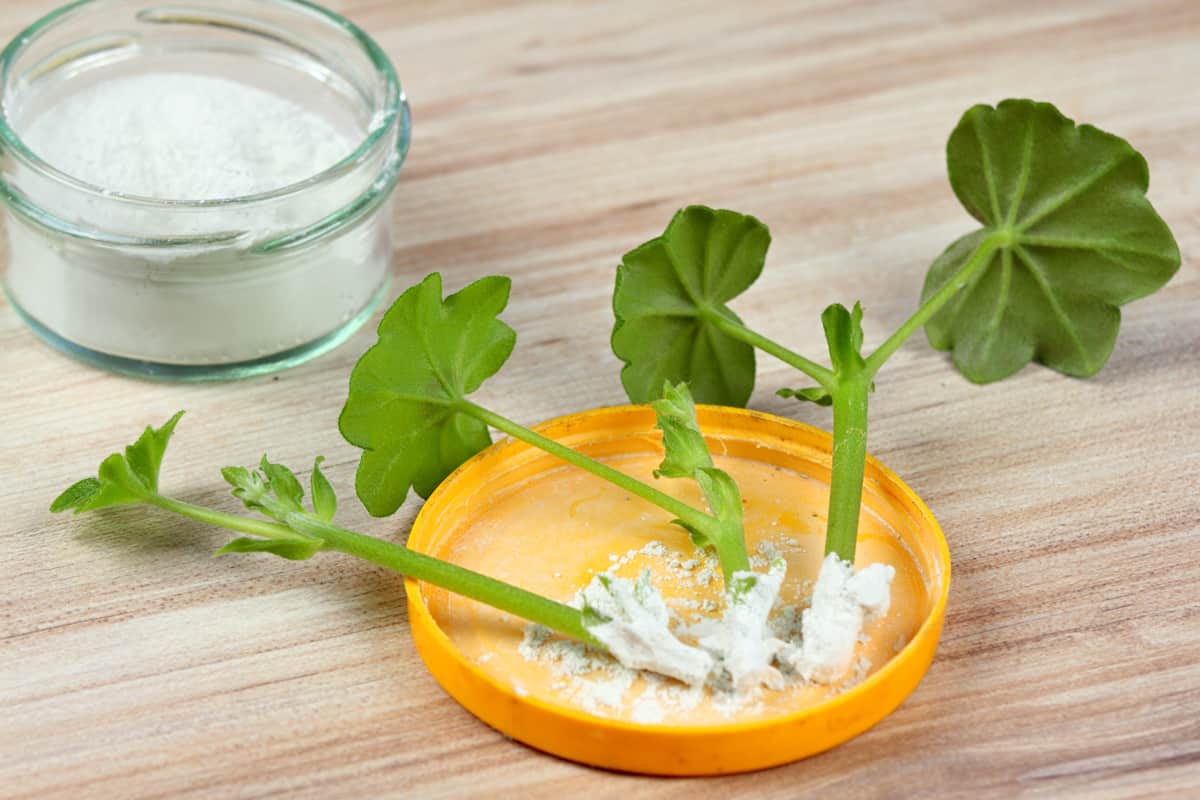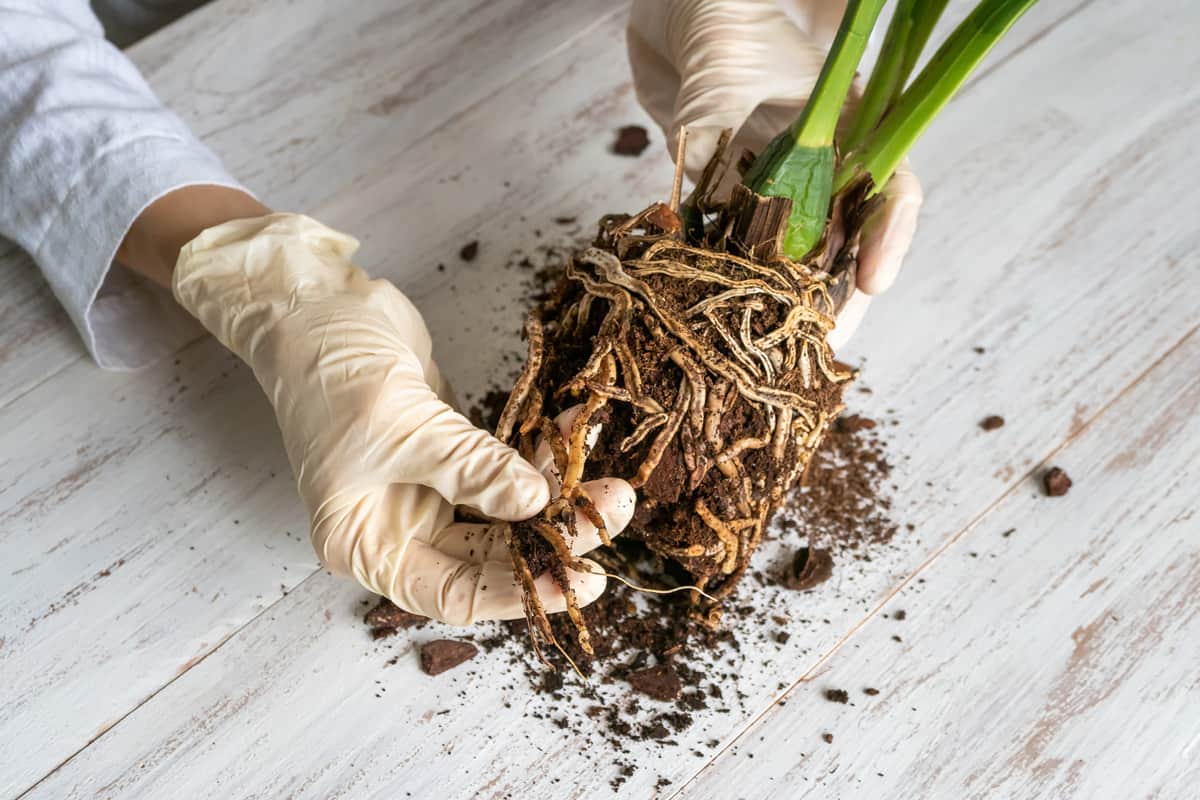A plant may absorb water and nutrients more effectively if its roots are long and numerous. But did you know that you may improve your plant's roots using root stimulators? You may be wondering which root stimulators are the best on the market. We've scoured the internet and have brought you the best answers.
A root growth stimulator guarantees that a plant properly develops roots. Strong roots produce solid and healthy plants. Here are the seven best root stimulants for plants:
- Wildroot Organic Root Stimulator
- Fertilome Root Stimulator and Plant Starter Solution
- Dutch Pro Root Stimulant
- Canna Rhizotonic Root Stimulator
- Rootmax
- Moon Valley Nurseries
- Envii Deep Rooter
We will discuss how these root stimulators work, and we will show you the comparison of all the best root stimulators for plants. Also, we will help you distinguish the difference between root stimulators and rooting hormones, which are similar yet have different functions. Keep reading to find the answers and to discover which root stimulant best meets your requirements.`

How Does The Root Stimulator Work?
When a plant is cut, it may be challenging for the new stem to develop new roots. The secret to plants' performance and growth is rich, healthy root systems. A root stimulator is used for the plant's roots to branch out more quickly.
Products for stimulating root growth are offered as liquids, gels, or powders. Some products also include anti-fungal and anti-bacterial ingredients.
Root stimulator includes hormones, vitamins, organic compounds, helpful bacteria, and additional components that aid in stimulating the roots of your plants.
The active elements in various rooting stimulators include a range of hormones, including indole butyric acid and indole acetic acid.
Indole butyric acid promotes root growth horizontally rather than deeply into the ground. At the same time, Indole acetic acid is an auxin that can either promote or hinder root growth depending on its dosage. Because of this, the new roots are located nearer the surface, where they can easily acquire oxygen.
Even when buried deep, a plant's roots still require oxygen to survive. The cells of the roots need oxygen to function and maintain the roots' life.
Be sure to read the directions on the stimulator's label before using it. Use 1 pint of the product for every gallon of water. Then add 3 1/2 tablespoons per gallon for established plants. Then, pour the liquid slowly around the plant's root zone.
Both indoor and outdoor cultivation are acceptable uses for each of these products. You can use root stimulators on perennials, shrubs, and trees.
They work best in poor or compacted soil. It is advised to shake the product before using it and to store it in a cool, dry area out of direct sunlight for optimum use and conservation.
7 Best Root Stimulators For Plants
Root stimulators are frequently employed to promote quick root systems. In addition, this also promotes resistance to pests and diseases. Below are the seven best root stimulators for plants:
1. Wildroot Organic Root Stimulator
Wildroot Organic contains Mycorrhizae that provide nutrition, supporting and replenishing plant roots. It helps develop a healthy organic environment where plants get nutrients such as magnesium and phosphorus, water, sugars, etc.


Click here to see this root stimulator on Amazon.
2. Fertilome Root Stimulator and Plant Starter Solution
This product combines a root stimulant and fertilizer. You are promoting the growth of your plant and strengthening the roots at the same time. This product is best for annuals, trees, shrubs, roses, and houseplants.
Due to its liquid nature, it is simple to apply. However, due to the fertilizer content, you cannot use this when your plant is dormant.


Click here to see this root stimulator and plant starter solution on Amazon.
3. Dutch Pro Root Stimulant
Many gardeners vouch for the Dutch Pro line's explosive impact on new root growth. It offers some of the healthiest, fastest-growing plants you will find anywhere. This product also has the capacity to delay the aging of your plants.


Click here to see this root stimulant on Amazon.
4. Canna Rhizotonic Root Stimulator
More than 60 microbiological additives by Rhizotonic significantly speed up the development of a healthy root environment. It contains entirely natural vitamins. Rhizotonic makes the seed skin softer and improves the plant's growth and chemical processes to produce a stronger, healthier plant.


Click here to see this root stimulator on Amazon.
5. Rootmax
Rootmax includes mycorrhizal fungi, which create secondary root systems, resulting in a 3–5 fold increase in root size. As the root system gets bigger and the plant gets healthier, it is better equipped to withstand bad weather and handle stress.
Rootmax is entirely natural and includes no synthetic nutrients. The plant can extract more crucial nutrients from the soil thanks to a stronger and wider root system. As a result, the plant can produce healthier flowers, fruits, and bulbs throughout the flowering stage.


Click here to see this product on Amazon.
6. Clonex Mist Root Stimulator
Clonex is created especially for mother plants. It aims to provide the nutrients required for your plants. Apply the Clonex Mist growth technology every three days for two weeks before cutting.


Click here to see this root stimulator on Amazon.
7. Envii Deep Rooter
Envii deep rooter lengthens an existing plant's root system and aids in developing robust roots in cuttings or new plants. The plant may reach more water and nutrients located deeper in the soil by lengthening its roots. Deep Rooter stimulates a plant to grow within its roots.


Click here to see this product on Amazon.
Difference Between Root Stimulator And Root Hormone
Root stimulators and rooting hormones are the most common methods for promoting plant growth. Though they are sometimes misconstrued, the two have a significant distinction.
Existing roots are treated with rooting stimulators. These substances aid in strengthening your plants' roots and giving them new branches and hairs.
Rooting hormone is the best option if you have cuttings you want to root. If they are unable to root, rooting hormones might work. You can use it to promote new root growth in plants that have been injured or are otherwise unhealthy.
There are many different formulations of rooting hormones and root stimulators, including liquids, powders, and gels. Before utilizing either product, it is crucial to thoroughly read the directions because each form has unique application guidelines. Ask the staff at your garden center for recommendations if you're unsure which product to use.


Click here to see this rooting hormone powder on Amazon.
Is A Root Stimulator Necessary?

Root stimulators support the development of robust root systems in your plants. Consequently, having a strong root system will assist your plants in growing. A root simulator is perfect for a new plant, for this can enhance your plant's root growth throughout the year.
However, root stimulators shouldn't be required as long as the soil and plants are healthy and are receiving the right amount of sunlight and water.
Which Is The Best Among Liquid, Powdered, And Gel Root Stimulators?
Root stimulator is available in powder, liquid, and gel. It is often applied to the cut end of the stem after being diluted with water.
Because it's the easiest to use, liquid root stimulators are often bought by gardeners. You can use the product undiluted or combined with water.
On the other hand, you can simply dip stem cuttings in the gel or roll them in the powder. But always remember to wear safety gear when dealing with powder because it can get in your eyes or stick to your skin.


Click here to see this rooting gel on Amazon.
Can You Use Too Much Root Stimulator?

Overdosing a rooting stimulator hurts the cutting rather than helping it. Avoid getting the rooting stimulator on the foliage since this can result in crooked leaves. Too much starting solution in warm weather may harm plants because it might increase nutrient concentration.
Plain water is also a good root stimulant. Make sure the water penetrates the existing soil and past the root. Hence, the roots of the plants are encouraged to spread beyond the planting hole.
In Closing
Using a root stimulator is the ideal technique to maintain the health and functionality of your plant's roots. No matter what kind of root system a plant employs, the roots need specific environmental factors to flourish and successfully perform their roles.
Read the directions on the stimulator's label before using it for the first time. We hope you found your ideal root stimulator for your plant through this post.
Before you go, you may want to check out these other posts about fertilizer:
5 Best Fertilizers For Norfolk Island Pine [And How Much To Use]
6 Best Fertilizers For An Allamanda Plant

